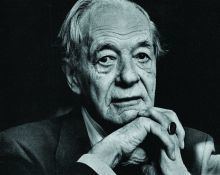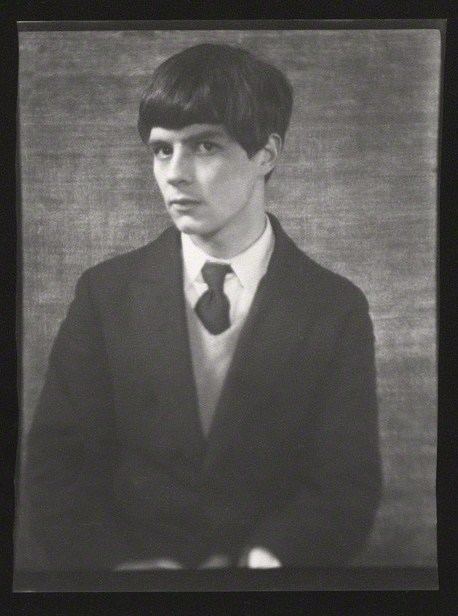Name Steven Runciman Role Historian | ||
 | ||
Died November 1, 2000, Warwickshire, United Kingdom Parents Hilda Runciman, Viscountess Runciman of Doxford, Walter Runciman, 1st Viscount Runciman of Doxford Books A History of the Crusades, fall of Constantinople - 1453‑, The Great Church in Captivity, The Sicilian Vespers, The medieval Manichee | ||
Grandparents James Cochran Stevenson | ||
Steven runciman
Sir James Cochran Stevenson Runciman, CH, FBA (7 July 1903 – 1 November 2000), known as Steven Runciman, was an English historian best known for his three-volume A History of the Crusades (1951–54).
Contents
- Steven runciman
- Minoo Dinshaw 5x15 Outlandish Knight
- Biography
- Last year and death
- Assessment
- Honours
- Works
- References

His three-volume history has had a profound impact on common conceptions of the Crusades, primarily portraying the Crusaders negatively and the Muslims favourably. Runciman was a strong admirer of the Byzantine Empire, and consequently held a bias against the Crusaders for the Fourth Crusade evident in his work. While praised by older crusade historians as a storyteller and prose stylist, he is viewed as biased by some contemporary historians.

Minoo Dinshaw @ 5x15 - Outlandish Knight
Biography

Born in Northumberland, he was the second son of Walter Runciman, 1st Viscount Runciman of Doxford, and Hilda Runciman, Viscountess Runciman of Doxford. Both of his parents were or became members of parliament for the Liberal Party, and were the first married couple to sit simultaneously in Parliament. His father was created Viscount Runciman of Doxford in 1937. His paternal grandfather, Walter Runciman, 1st Baron Runciman, was a shipping magnate. He was named after his maternal grandfather, James Cochran Stevenson, the MP for South Shields.

It is said that he was reading Latin and Greek by the age of five. In the course of his long life he would master an astonishing number of languages, so that, for example, when writing about the Middle East, he relied not only on accounts in Latin and Greek and the Western vernaculars, but consulted Arabic, Turkish, Persian, Hebrew, Syriac, Armenian and Georgian sources as well. A King's Scholar at Eton College, he was an exact contemporary and close friend of George Orwell. While there, they both studied French under Aldous Huxley.
In 1921 he entered Trinity College of Cambridge University as a history scholar and studied under J.B. Bury, becoming, as Runciman later claimed, falsely, "his first, and only, student". At first the reclusive Bury tried to brush him off; then, when Runciman mentioned that he could read Russian, Bury gave him a stack of Bulgarian articles to edit, and so their relationship began. His work on the Byzantine Empire earned him a fellowship at Trinity in 1927.
After receiving a large inheritance from his grandfather, Runciman resigned his fellowship in 1938 and began travelling widely. Thus, for much of his life he was an independent scholar, living on private means. He went on to be a press attache at the British Legation in the Bulgarian capital, Sofia, in 1940 and at the British Embassy in Cairo in 1941. From 1942 to 1945 he was Professor of Byzantine Art and History at Istanbul University, in Turkey, where he began the research on the Crusades which would lead to his best known work, the History of the Crusades (three volumes appearing in 1951, 1952, and 1954). From 1945 to 1947 he was a representative in Athens of the British Council. Most of Runciman's historical works deal with Byzantium and her medieval neighbours between Sicily and Syria; one exception is The White Rajahs, published in 1960, which tells the story of Sarawak, an independent state founded on the northern coast of Borneo in 1841 by James Brooke, and ruled by the Brooke family for more than a century.
In his personal life, Runciman was an old-fashioned English eccentric, known, among other things, as an aesthete, raconteur, and enthusiast of the occult. According to Andrew Robinson, a history teacher at Eton, "he played piano duets with the last Emperor of China, told tarot cards for King Fuad of Egypt, narrowly missed being blown up by the Germans in the Pera Palace hotel in Istanbul and twice hit the jackpot on slot machines in Las Vegas".
Last year and death
He died in Radway, Warwickshire, while visiting relatives, aged 97. He never married. Earlier the same year, he had made a final visit to Mount Athos to witness the blessing of the Protaton Tower at Karyes (the capital of the monastic community), which had been refurbished thanks to a gift from him. He was interred in Lockerbie, Dumfriesshire.
Assessment
Jonathan Riley-Smith, one of the leading historians of the Crusades, denounced Runciman for his perspective on the Crusades. Riley-Smith had been told by Runciman during an on-camera interview that he [Runciman] considered himself "not a historian, but a writer of literature."
According to Christopher Tyerman, Fellow and Tutor in History at Hertford College and Lecturer in Medieval History at New College, Oxford, Runciman created a work that "across the Anglophone world continues as a base reference for popular attitudes, evident in print, film, television and on the internet."
Runciman held sympathies toward the Byzantine Empire and blamed the Crusaders, whom he considered "intolerant barbarians", for causing the downfall of Constantinople in the Fourth Crusade. Consequently, a bias against the Crusaders is evident in his work. Less than a decade after the Second World War ended, Runciman called the Fourth Crusade the greatest crime committed against humanity.
Edward Peters (2011) claims Runciman's three-volume narrative history, "instantly became the most widely known and respected single-author survey of the subject in English."
John M. Riddle (2008) says that for the greater part of the twentieth century Runciman was the "greatest historian of the Crusades." He reports that, "Prior to Runciman, in the early part of the century, historians related the Crusades as an idealistic attempt of Christendom to push Islam back." Runciman regarded the Crusades "as a barbarian invasion of a superior civilization, not that of the Muslims but of the Byzantines."
Thomas F. Madden (2005) stresses the impact of Runciman's style and viewpoint:
It is no exaggeration to say that Runciman single-handedly crafted the current popular concept of the crusades. The reasons for this are twofold. First, he was a learned man with a solid grasp of the chronicle sources. Second, and perhaps more important, he wrote beautifully. The picture of the crusades that Runciman painted owed much to current scholarship yet much more to Sir Walter Scott. Throughout his history Runciman portrayed the crusaders as simpletons or barbarians seeking salvation through the destruction of the sophisticated cultures of the east. In his famous "summing-up" of the crusades he concluded that "the Holy War in itself was nothing more than a long act of intolerance in the name of God, which is a sin against the Holy Ghost.”Mark K. Vaughn (2007) says "Runciman's three-volume History of the Crusades remains the primary standard of comparison." However Vaughn claims that Tyerman "accurately, if perhaps with a bit of hubris, notes that Runciman's work is now outdated and seriously flawed." Tyerman himself has said "It would be folly and hubris to pretend to compete, to match, as it were, my clunking computer keyboard with his [Runciman's] pen, at once a rapier and a paintbrush; to pit one volume, however substantial, with the breadth, scope and elegance of his three."
